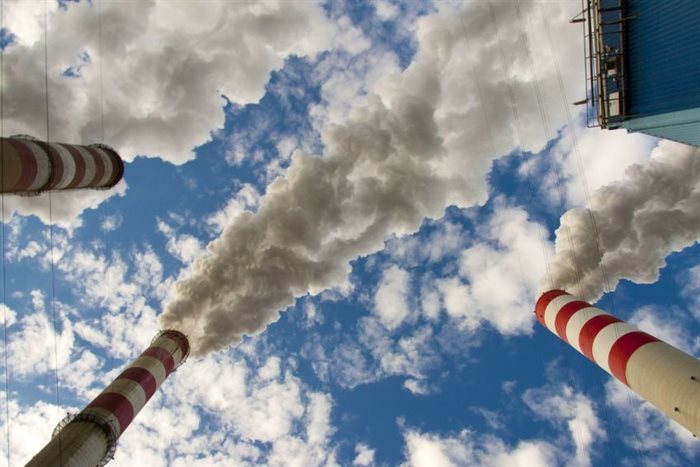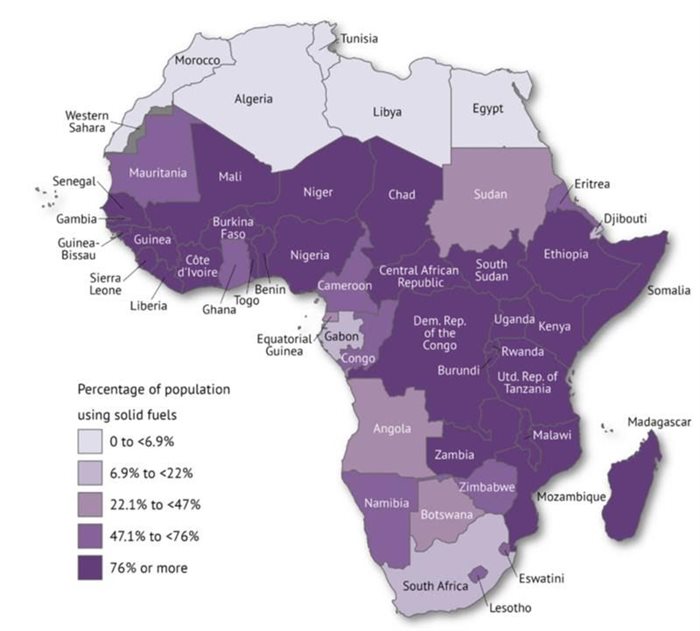According to a new report from the US-based Health Effects Institute (HEI), several African countries experience some of the highest levels of air pollution in the world. The State of Air Quality and Health Impacts in Africa report provides an analysis of major air pollution sources and related health impacts on the continent.
Released just before the UN’s upcoming COP27 Climate Change Conference in Egypt, the report finds that air pollution is the second leading risk factor for death across the continent. Africa is home to five of the top ten most heavily polluted countries worldwide in terms of outdoor fine particulate matter (PM2.5).
Outdoor PM2.5 is the most consistent predictor of deaths from cardiovascular, respiratory, and other diseases in studies of long-term exposure to air pollution. In 2019, air pollution contributed to an estimated 1.1 million deaths in Africa, with 63% linked to exposure to household air pollution (HAP).
Impacts of air pollution on children
Access to clean energy across Africa is not equitably distributed, leading to larger disease burdens in certain areas. Across East, West, Central, and Southern Africa, an estimated 75% of the population relies on burning solid fuels such as coal, wood, and charcoal for cooking, exposing residents to high concentrations of harmful pollutants at home every day.
Newborns and children under five years old in these regions are at a particularly high risk from household air pollution linked to use of solid fuels for cooking. About 236,000 newborns die within the first month of life from air pollution exposure, with 80% of those coming from HAP.
In 2019, 14% of all deaths in children under five across Africa were linked to air pollution. The impacts on newborns and infants also have long-term consequences for overall health, including issues with lung development and increased susceptibility to communicable diseases such as lower respiratory infections in young children.
Caradee Wright, chief specialist scientist with the South African Medical Research Council, said, “This report gives evidence of the substantial threat air pollution poses to the health, and even life, of babies and children under the age of 5 years. This vulnerable group needs special attention to mitigate their exposures, for example, through policy and intensive awareness campaigns with practical solutions for mothers and caregivers.”
Air pollution sources across the continent
In Africa, PM2.5 comes from many of the same sources found elsewhere in the world, including use of solid fuels for cooking, fossil fuel use (coal, oil, and gas) for energy production, vehicles, industrial and semi-industrial activities like artisanal mining, agriculture, forest fires, and open waste fire pits. In parts of Africa, windblown dust, a natural source of air pollution, is also a major contributor to PM2.5 levels.
Air pollution sources and related health impacts can vary widely across the continent. By region, Western Africa experiences the highest PM2.5 pollution with an average concentration of 64.1μg/m3, while Southern Africa has the lowest at 26.5μg/m3. In Southern Africa, use of fossil fuels contributes as much as 41% of the total outdoor PM2.5 levels, whereas in Eastern Africa, the contribution is only 11%.
Elias Biryabarema 31 May 2022
Targeted actions are beginning, more needed
While air pollution levels are high, countries across Africa are implementing a wide range of programmes to lower the impacts of air pollution. So far, 17 countries in Africa have established some national air quality policies, and many have included action on air pollution sources, especially household air pollution, as part of their country’s Nationally Determined Contributions (NDCs).
In 2019, Africa had one of the lowest energy access rates in the world, with fewer than one in 20 people living in the Democratic Republic of the Congo, Ethiopia, Madagascar, Mozambique, Niger, Uganda, and Tanzania having access to clean fuels for cooking. At the same time, a scarcity of ground-level air quality monitoring stations means countries are not able to accurately track their progress towards meeting air quality objectives and standards.
Dr Patrick de Marie Katoto of the Catholic University of Bukavu, Democratic Republic of the Congo, said, “Air pollution greatly contributes to the rising frequency of chronic noncommunicable diseases in Africa, putting further strain on a health system already stretched by chronic infectious diseases and, more recently, Covid-19.
"These findings call for the African Union and member states to promote, plan, and fund air quality interventions to prevent unnecessary disabilities and deaths throughout the continent.”
Key connections between air pollution and climate
As the world’s nations convene next month in Egypt for the COP27 climate meetings, Africa will consider how energy transitions can be designed to be efficient, economically feasible, sustainable, and environmentally friendly — a complex challenge that requires a nuanced conversation at the nexus of energy, climate, air quality, and health.
Countries in the African Union have also adopted the Agenda 2063, a continent-wide programme that lays out a strategic framework designed to deliver on its goal for inclusive and sustainable development for all residents by the year 2063. Meeting these challenges head-on will bring dual benefits of public health improvements and reductions in greenhouse gas emissions across Africa.
This report is released in coordination with a new report from the Clean Air Fund that examines how action on air pollution could free up billions of dollars, prevent thousands of deaths, and reduce greenhouse gas emissions by up to 20% by 2040.
Read the full report here.



























